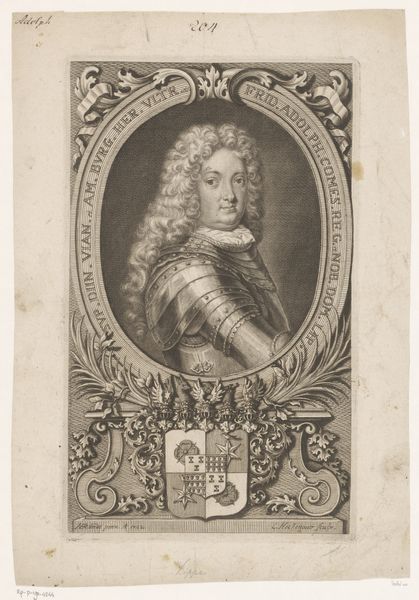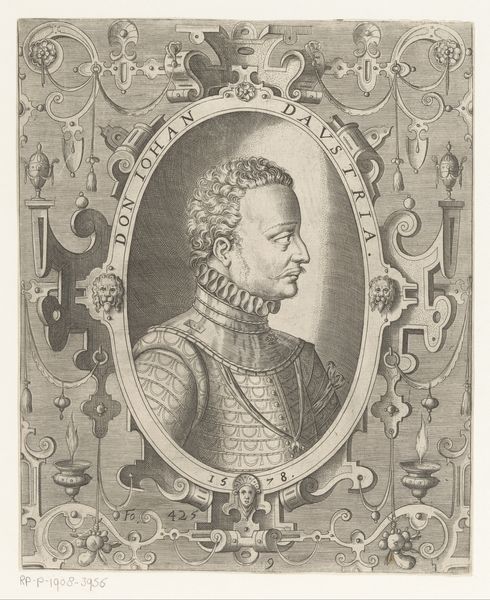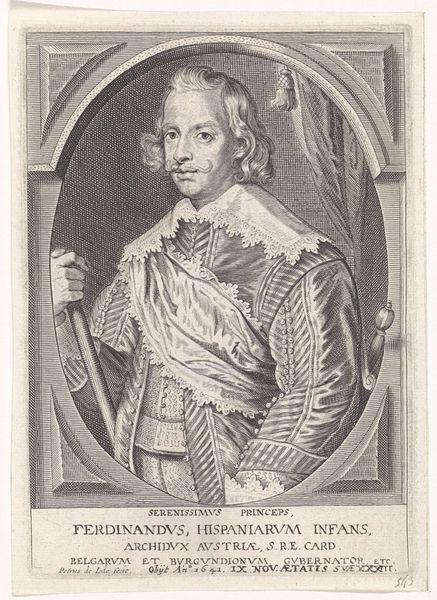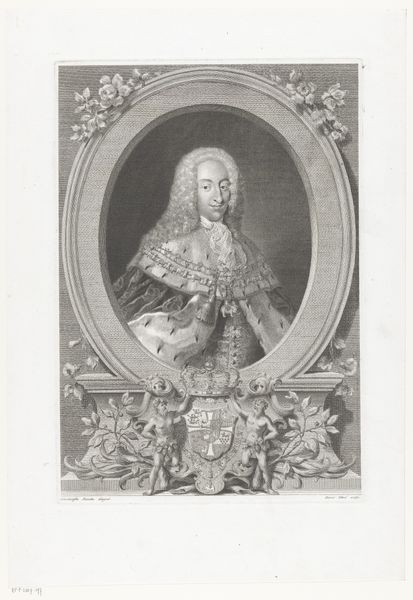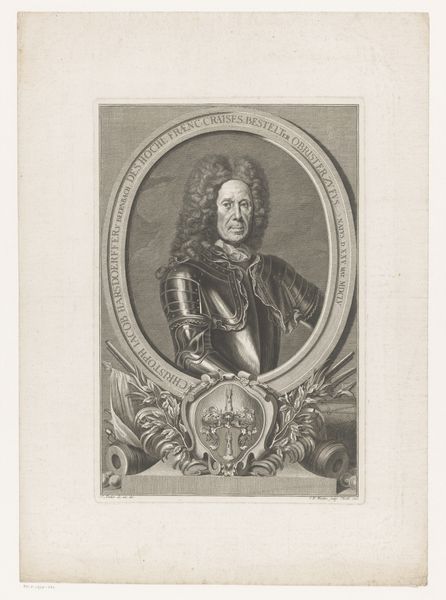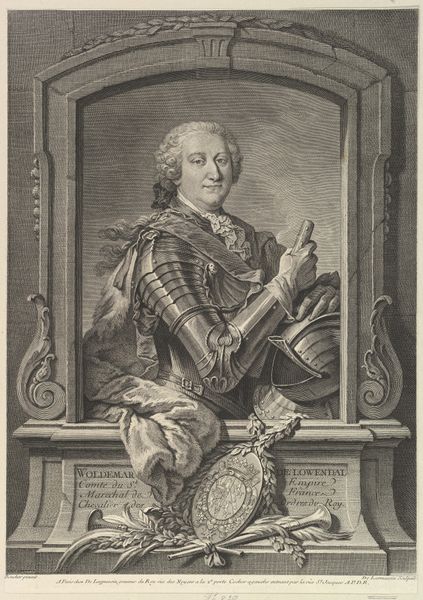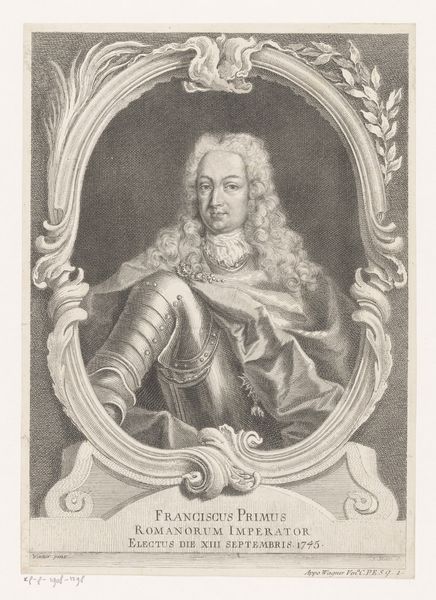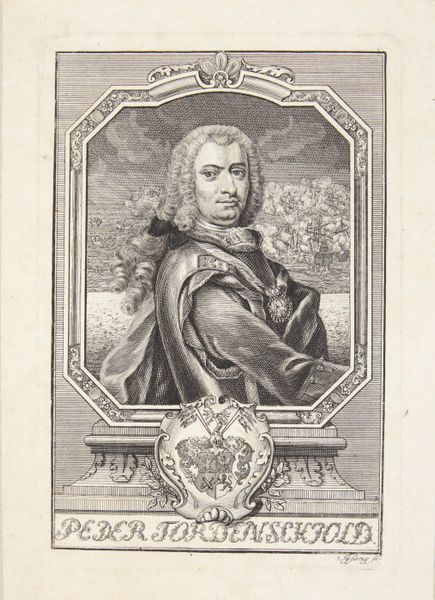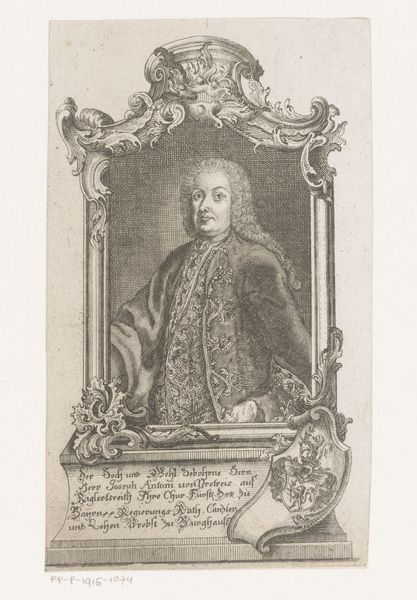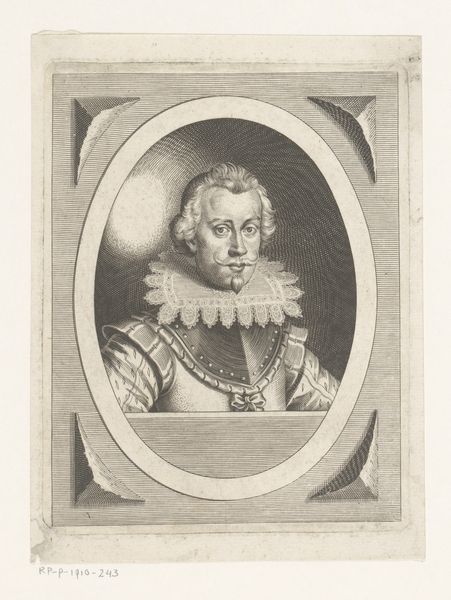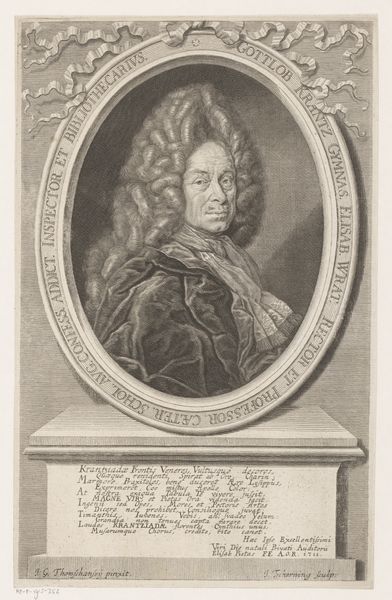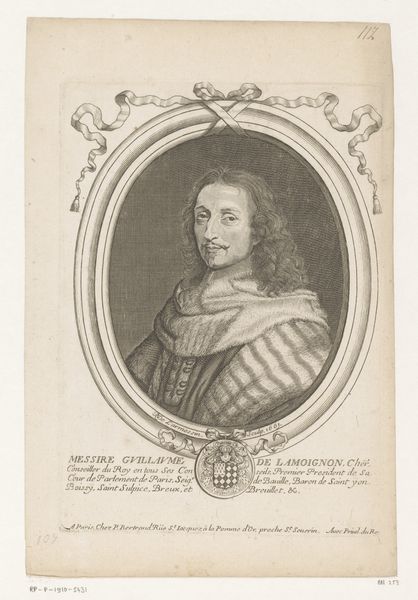
engraving
#
mannerism
#
history-painting
#
academic-art
#
engraving
Dimensions: height 212 mm, width 171 mm
Copyright: Rijks Museum: Open Domain
Curator: Look at this fascinating print. It's a portrait of Matthias of Austria, later Holy Roman Emperor, crafted in 1569 by Niccolo Nelli. The medium is engraving. Editor: Whoa, this is intense! All those meticulously etched lines… Makes the whole thing feel almost metallic, rigid. But Matthias himself has a surprisingly soft, melancholy gaze, doesn't he? Curator: Precisely. Nelli's skill lies in capturing that tension – the rigid formality demanded of royal portraiture combined with a flicker of humanity. Note how the frame, brimming with classical motifs, almost imprisons him. Editor: Yeah, that frame is wild. It's like a fancy cage. It makes me wonder, was this an act of propaganda or a subtle commentary on power, even critique? That's quite a serious ruffle too; does wearing those cause distress I wonder? Curator: It's more than possible. The formal language of Mannerism, prevalent at the time, often masked anxieties and instabilities beneath a veneer of elegance. Remember, portraits like these weren’t just likenesses. They communicated lineage, power, ambition. The symbols – the laurel wreaths, the lion heads – would have spoken volumes to contemporary viewers. Editor: Right, it's a performance of power. And what do you make of the choice of engraving? That must have been a technical commitment to distribute his image, making Matthias almost available for everyone, right? Or at least more people than a single painted image could provide? Curator: Yes. Engraving allowed for wider circulation and for more control to craft his appearance. The print served as a visual echo of Matthias's authority and status but as an engraved artwork would only show that Matthias approved its publication and use. And the almost photorealistic image helps ground it and makes it more familiar to a wider audience. Editor: It's still fascinating how such a controlled image manages to convey a vulnerability. That gaze… it makes you wonder what Matthias was really thinking and what Nelli saw in him. Curator: Absolutely. It's those subtle contradictions that keep us coming back to these historical portraits. The interplay between what's deliberately presented and what's inadvertently revealed. Editor: Well, I know a little more now about this image than I did 2 minutes ago. So it seems that audio guide has fulfilled its goal. Curator: Indeed. And it goes to show, that looking closely at the visual language of the past illuminates not just history but our own perceptions, too.
Comments
No comments
Be the first to comment and join the conversation on the ultimate creative platform.
